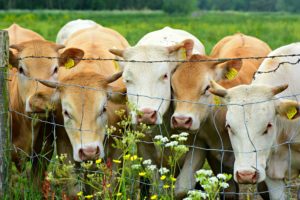
SHARE THIS ARTICLE:
Systematic Review: Cattle Effects on Vector-Borne Disease Human Risk
medRxiv (Chakraborty, S., et al.) 2.9.23 published “Effects  of cattle on vector-borne disease risk to humans: A systematic review.” The researchers’ aim was to shed light on different ecological systems that are affecting human risk for contracting vector-borne diseases (VBDs) from cattle.
of cattle on vector-borne disease risk to humans: A systematic review.” The researchers’ aim was to shed light on different ecological systems that are affecting human risk for contracting vector-borne diseases (VBDs) from cattle.
The study involved screening 470 peer-reviewed articles published from 1999 – 2019 from Web of Science Core Collection, PubMed Central, CABI Global Health, and Google Scholar. Results imply that cattle can be beneficial or harmful to human health with respect to VBDs. Through a variety of mechanisms, cattle can increase the risk of exposure to infections transmitted by tsetse flies, ticks, sandflies, and mosquitoes. Conversely, cattle can have a protective influence when the vector prefers to feed on cattle rather than humans, as well as when chemical control measures are utilized.
Overall, the systematic review found that cattle mostly heighten the risk for exposure to VBDs in humans. Further research is needed to better understand the specific ecological mechanisms and to develop methods for preventing and decreasing VBD exposure risk to humans.
For more information:
Read more about tick vectors and livestock.





